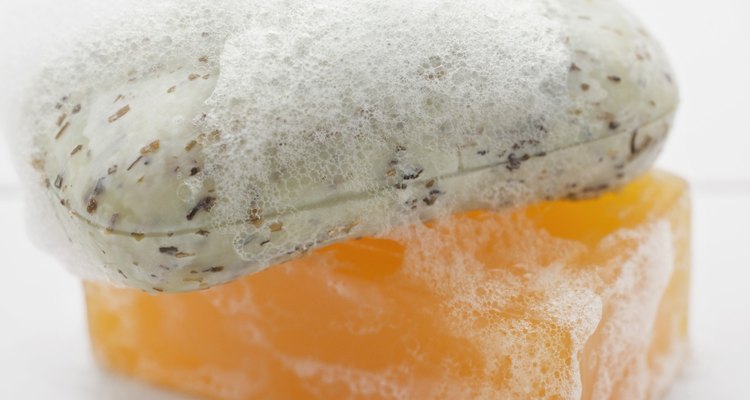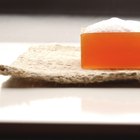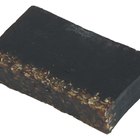
Creatas Images/Creatas/Getty Images
The invention of soap is, from an evolutionary standpoint, a recent invention, emerging during the Middle Ages. Centuries later, a substance called soda ash, or sodium carbonate, improved the cleaning power of soap and allowed industrial production to create an effective, inexpensive product.
Identification
Soap is the chemical reaction between sodium hydroxide and a fat or oil. Once the chemical reaction completes, what is left is glycerin (a moisturizer) and sodium salts of fatty acids (soap).
Features
Sodium carbonate soaps help remove insoluble oils from materials, such as motor oils, human sweat stains and vegetable grease.
Functions
Sodium carbonate soaps are ideal for hard water conditions, which have an acidic environment. Sodium carbonate creates an alkaline medium, ideal for detergents to remove unwanted, insoluble stains.
Significance
Sodium carbonate soaps help eliminate the magnesium and calcium rings around the bathtub, by neutralizing the mineralized ions in the water.
History
In 1791, Nicholas Leblanc, a French chemist, patented a process for making soda ash (sodium carbonate) from common table salt. Industrial soap makers were able to produce large quantities of inexpensive, quality soap.
Related Articles

Ingredients of Fels Naptha

Difference Between Soap & Synthetic ...

Inert Ingredients for Dove Shampoo

Ingredients of Bar Soap

Description of Palmolive Bar Soap

Importance of a Soap Detergent

Grandpa's Pine Tar Soap Ingredients

What Is Triple-Milled Soap?

What Ingredients Are in Detergent?

What Is the Chemical Composition of ...

Ingredients in Dial Liquid Soap

Phisoderm Ingredients

What Are the Benefits of Olive Oil Soap?

What Foods Provide Calcium D-Glucarate?

Noxzema Ingredients

Properties of Bentonite Magmas

Reverse Osmosis Purifier Vs. Ionization

About African Black Soap

List of Soaps for Acne

Homemade Conditioner With Jojoba Oil
References
Writer Bio
Eric Tilden is a fantasy novelist and author of a weekly newsletter for P*JET * IMAGES, an online art website. He has been working on his fiction novels since 2005, and has written for Demand Studios since June 2009. Tilden attended the University of Michigan-Flint, obtaining an education in art, music theory, archaeology, accounting, calculus and basic graphic design.
Photo Credits
Creatas Images/Creatas/Getty Images